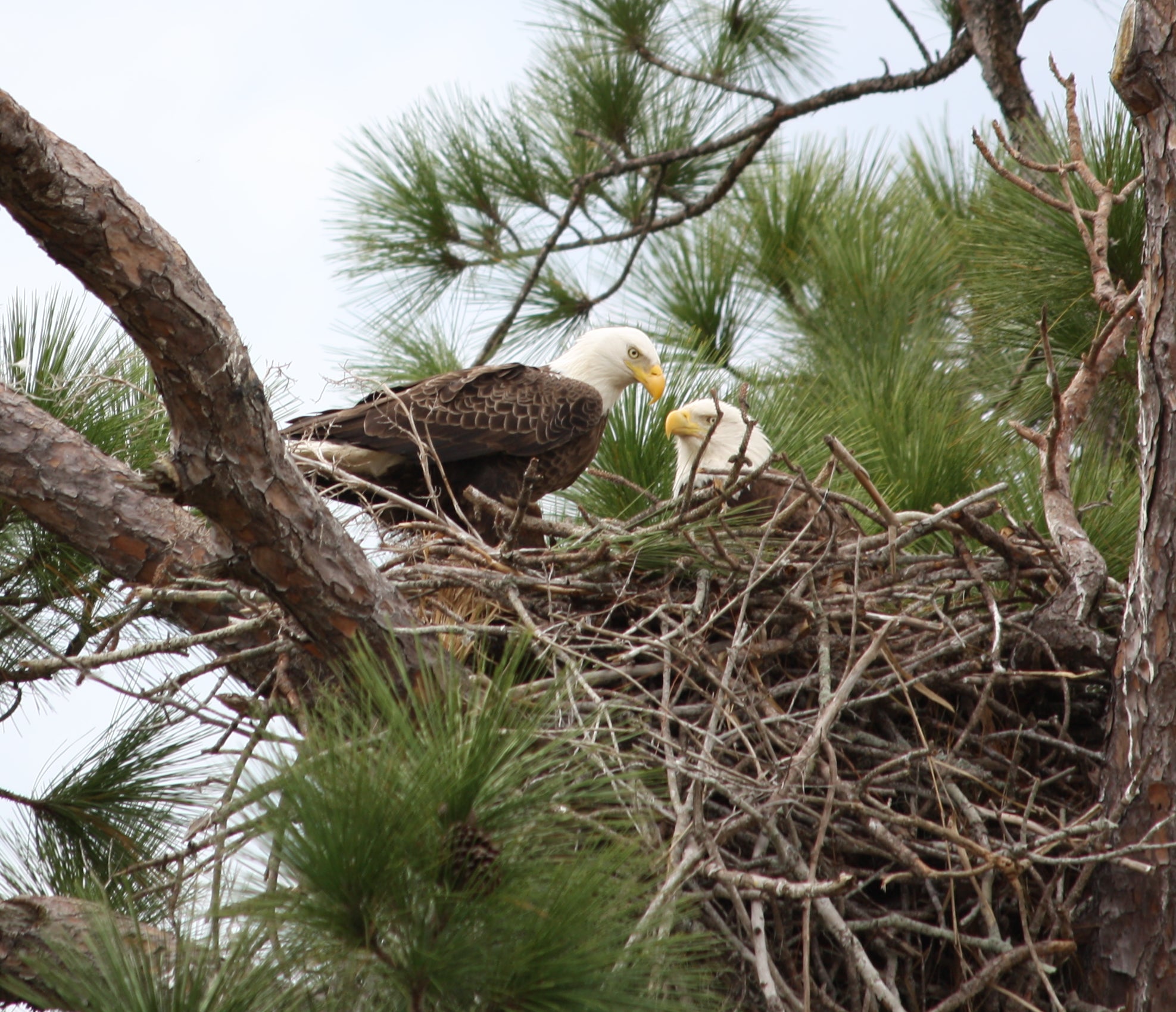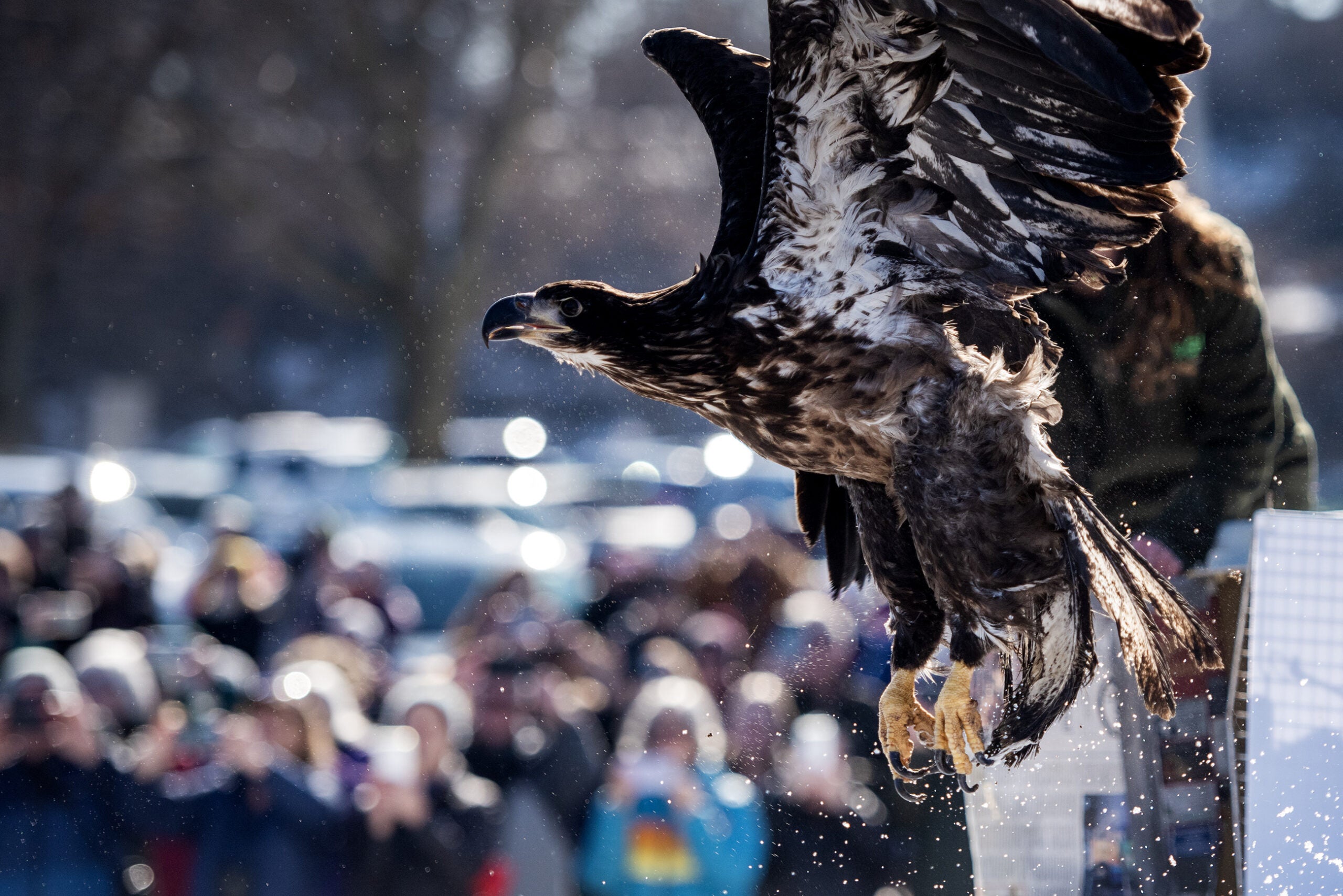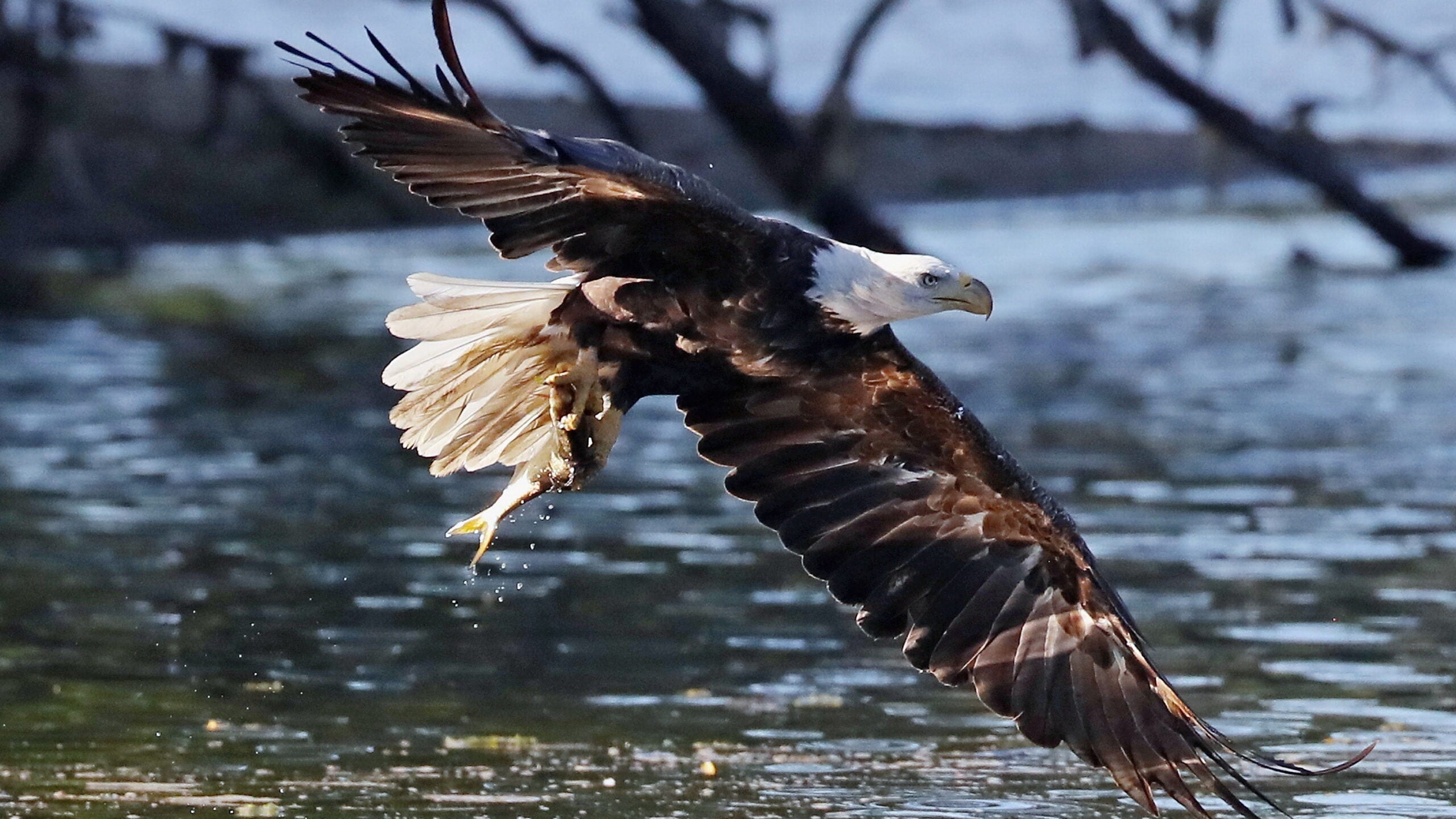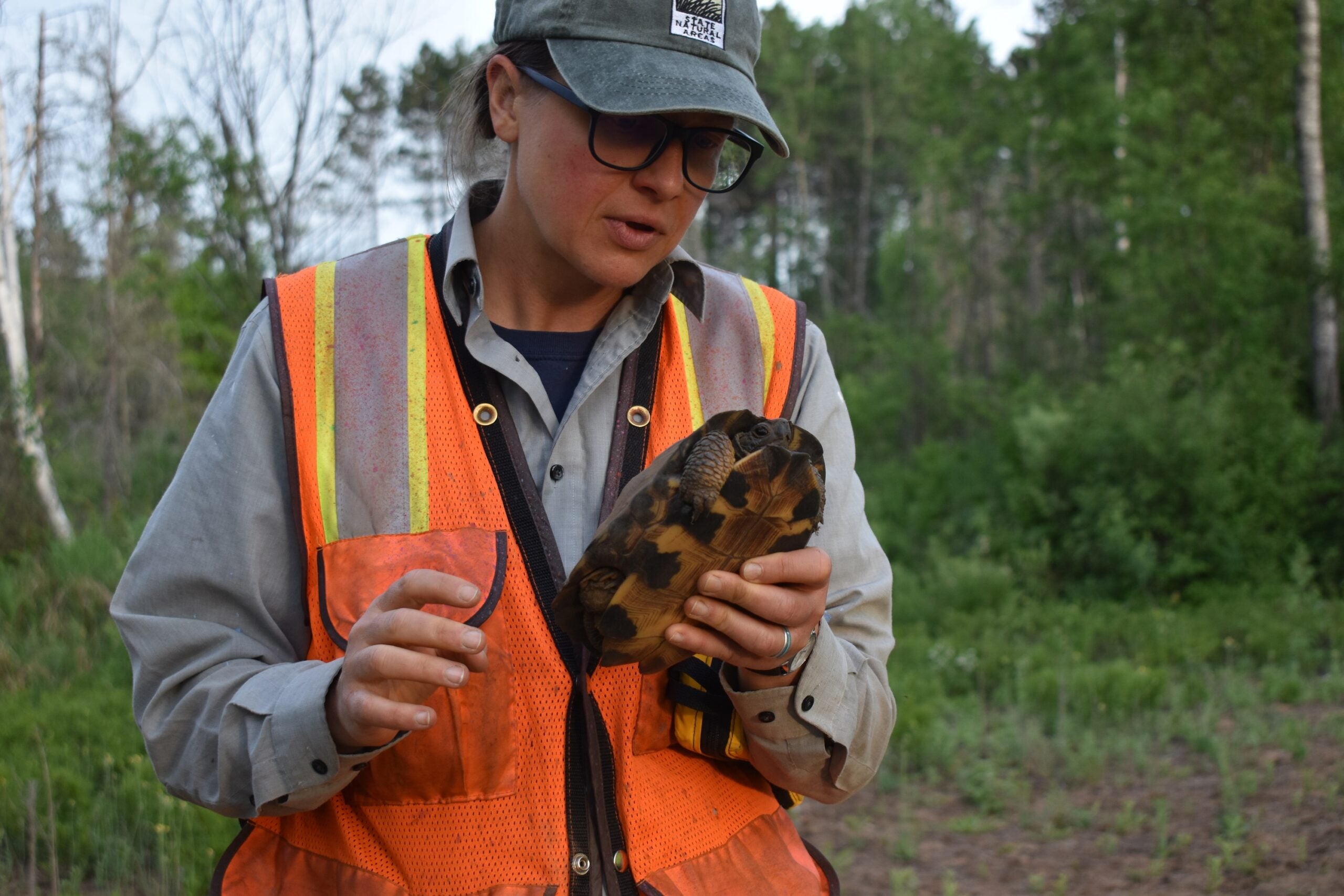An aerial survey of bald eagle nests in Wisconsin indicates a record number of occupied nests in a record number of counties.
Forty-one years ago, in the first Department of Natural Resources aerial survey, biologists found only 108 breeding pairs of eagles in the state. Last year, that number had risen to 1,337 pairs, a record that will probably be broken again this year.
Conservation biologist Jim Woodford says there are a number of reasons for the turnaround, the most important of which was banning the pesticide DDT in the seventies.
Stay informed on the latest news
Sign up for WPR’s email newsletter.
“DDT caused the eggshells to thin on a lot of the raptors, including bald eagles. When the female or the male was incubating the eggs, the eggs would actually break.”
Woodford says nesting bald eagles can now be found in all but four of Wisconsin’s counties. He says the birds are becoming more comfortable around people.
“A lot of the bald eagle nests were on lakes that were undeveloped or almost wilderness settings. Now we see bald eagles nesting in large trees over houses, cabins.”
A third factor in Wisconsin’s bald eagle success is climate change. Woodford says with warmer winters, there are more rivers that don’t freeze over, and they provide a food source for the large birds.
“Generally bald eagles were considered migrants, but in the last few years anyway, we’ve seen more and more eagles that are around every month of the year, even up in northern Wisconsin. The number of pairs we’re seeing and the densities we see up in northern Wisconsin is quite extraordinary.”
Woodford predicts that in a few years there will be nesting bald eagle pairs in every county in the state.
Wisconsin Public Radio, © Copyright 2024, Board of Regents of the University of Wisconsin System and Wisconsin Educational Communications Board.





